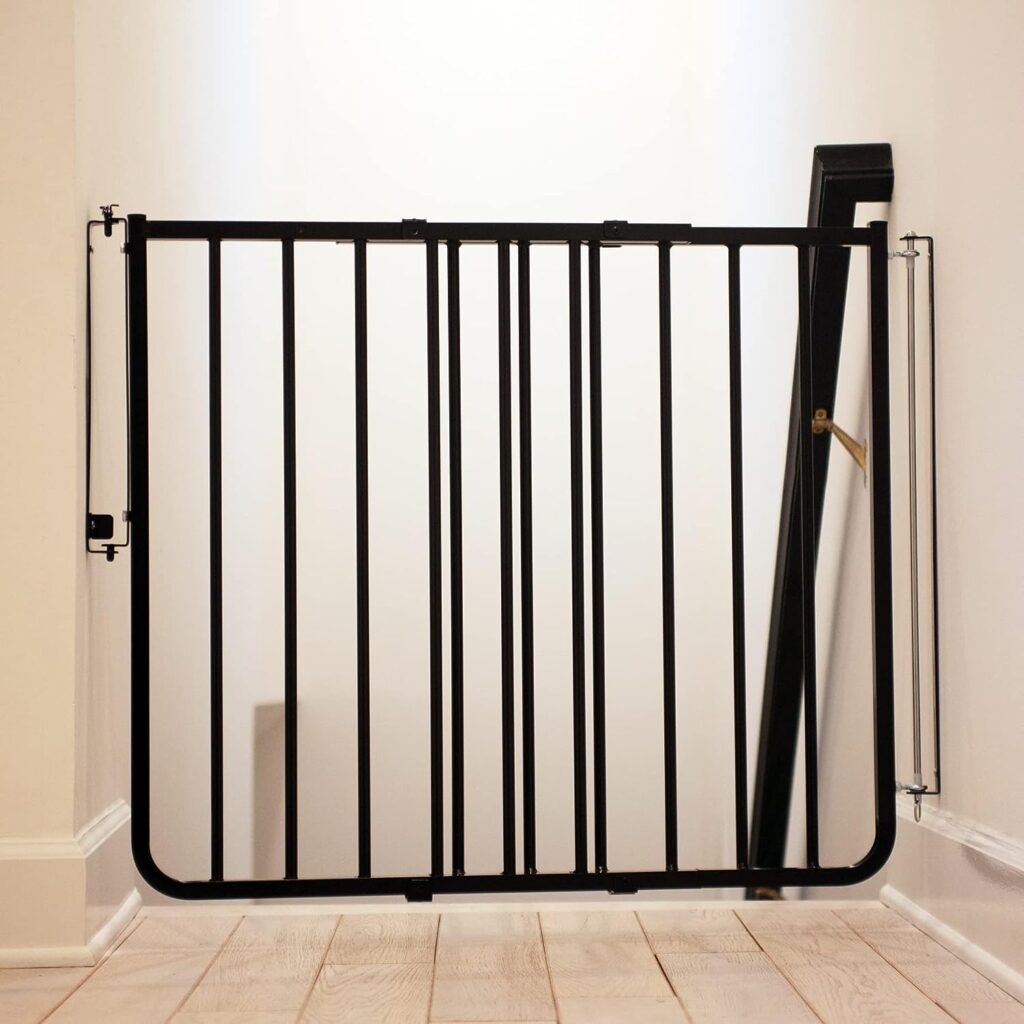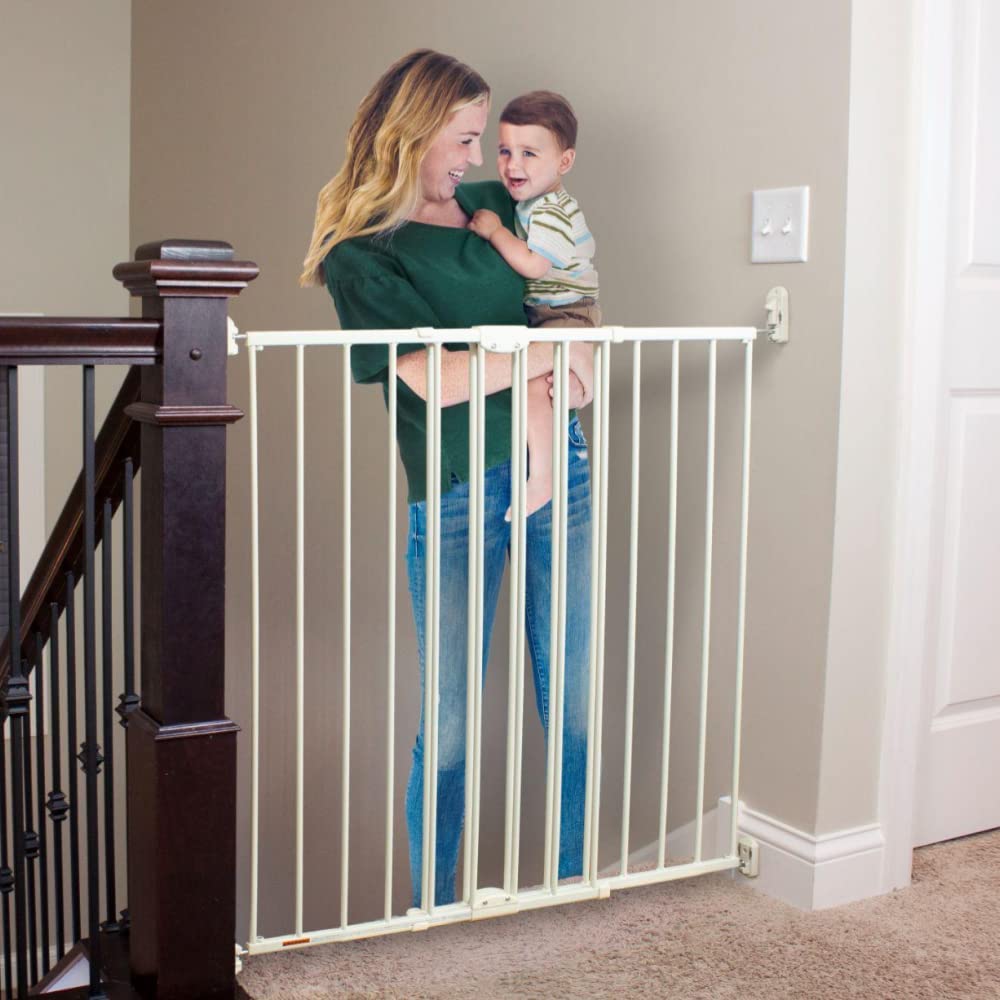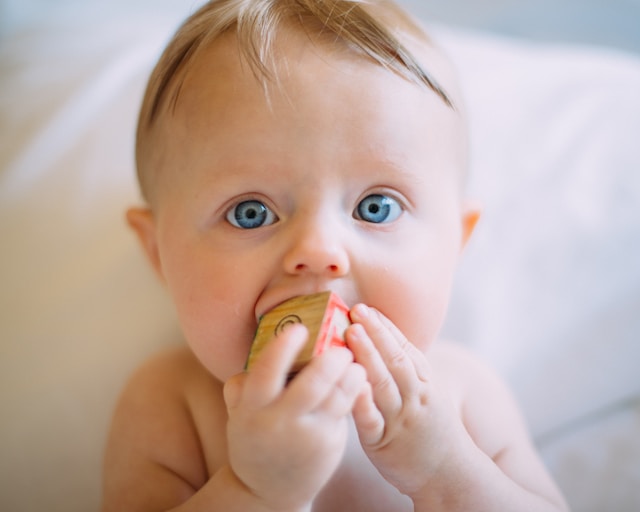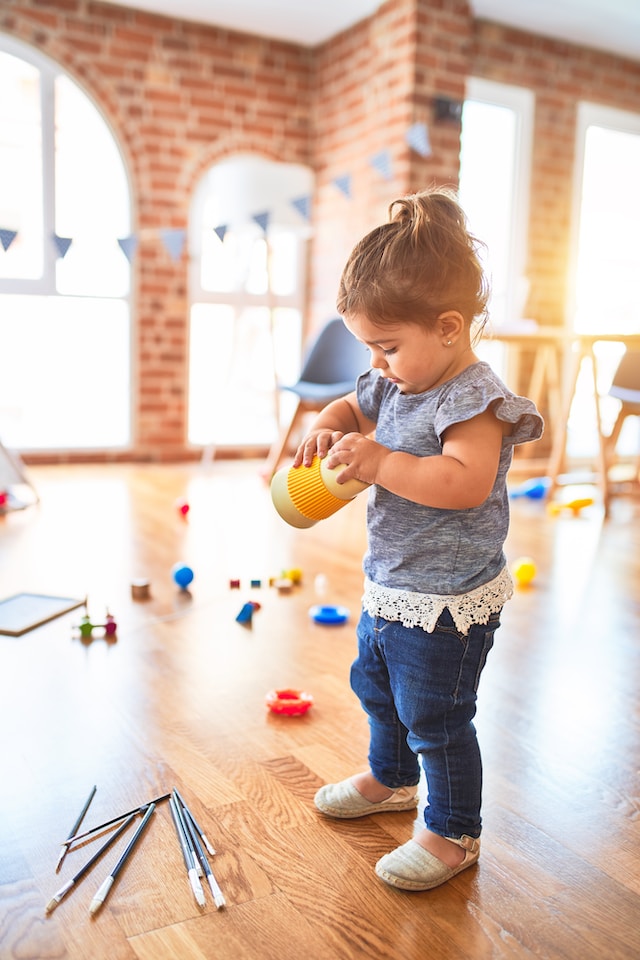When my littlest started crawling, she was 5 months old and serious about getting a move on. It was very apparent that she was going to get into everything…fast!
We immediately dubbed her our Little Explorer, because she wanted to know about all the things!
Since our house has a basement with stairs from the top level, it became our first priority to make sure that she would never encounter them without a barrier in place.
Plus, we learned quickly that we had to stay ahead of her by babyproofing everything in her reach.
Out of the abundance of my experience, I wanted to share with you some of my favorite ways to baby proof for a crawler so that you can be prepared.
Hopefully, these top 20 tips will come in handy for you!
Install baby gates at the top and bottom of all stairways
Install baby gates at key locations around the house…whether to keep baby in or baby out of certain areas.
Get down on your hands and knees and crawl around to look for hazards that baby might encounter.
Remove or tie up electrical cords out of reach, especially if they are connected to anything that can be pulled over or down.
Pick up small objects off the floor, whether trash, toys, or other random objects and vacuum every day.
Install cupboard locks to keep baby from getting into dangerous substances and to protect your stuff.
Remove or replace any window coverings that have long cords that are within baby’s reach.
Eliminate long, draping tablecloths to avoid having baby pull everything off the table in one fell swoop.
Put a toilet lock into place or keep the bathroom shut at all times.
Keep trash cans either blocked off from access or put small trash cans temporarily up onto counters.
Restrict access to entryways or shoe areas, or store shoes up high on shelves where they can’t be reached.
Install outlet covers that your child cannot manipulate.
Put bumpers on coffee tables, end tables, and hearths to keep baby from injuring her head as she gets more and more mobile.
Anchor all tall or heavy furniture to a stud in the wall, as crawlers are prone to try to and pull up on items such as dressers and bookshelves.
Use carpet or soft rugs on the floors where your baby crawls most often to reduce friction on her knees.
Make sure that if using an outdoor deck or porch that all slats are spaced no more than 4 inches apart so that baby cannot fit her head between them. Same goes for any banister area near a stairwell inside.
Use sections of pool noodles to prop doors open so that they cannot close all the way on baby and pinch fingers, since crawlers tend to hang onto door jambs and move doors.
Never leave a crawler unattended in a bath and install a faucet protector so they don’t bump their head while moving around during bathtime.
Remove knicknacks and objects on short tables in the areas that your crawler will be using.
Consider using a play pen for when you need to keep your crawler contained to a smaller area.
So there are my favorite ways to baby proof for a baby who is crawling or is on the verge of learning how. Remember that babies move quickly from stage to stage and though they may appear to be taking a while to crawl, they can master it in one day.
For this reason, be on guard and don’t assume that you have “plenty of time” to prepare.
Furthermore, keep in mind that a crawler might crawl for 6 months before becoming an independent walker, but they also may only crawl for a short time before also learning how to pull up and walk along the furniture.
You will want to be fully prepared for the ever-changing mobility of your baby. Crawlers soon turn into toddlers, even if they are mostly still crawling. And babyproofing needs change as your child becomes more mobile.
A baby who can pull themself up or can walk, even a little, can reach higher surfaces, which means that you will need to start looking up, up, up to keep your baby safe.
So, here’s to you and your crawler… Happy Baby Proofing!








